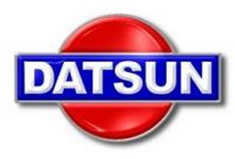GUIDE COATING MADE EASY published 2007
I am no where near close to being a professional body man but I have done a few Zs. I cannot paint except for primer worth a darn but I am pretty good at flattening out a panel. I will share what I know first hand. Your bodyman I am sure would prefer to do all of the work.
Like I mentioned on my website I had the car body, fenders, and hood acid stripped. That removed everything and I do mean everything. I do not think I would do that again as bead blasting would be a better alternative. That acid gets into every nook and cranny removing like I said "everything". If you do not get it sealed right away it can start rusting immediately. I had the strippers shoot it with a green oxide etching primer.
There were some pretty major flaws in the body once all the paint, bondo, and caulking had been removed. The left rear quarter panel had been completely replaced at one time. There were some major dings in the rocker panels. The only rust out was in the right rear right behind the wheel well. I cut it out, fabricated a replacement panel, and tacked welded it into place. Same thing with the left front fender. The part that bolts on right in front of the door was gone. I wondered why they had a metal bar bolted from the firewall to the rear edge of the front wheel well. That was holding the bottom of the fender on. I cut out the bad piece, fabricated a new one, and tack welded it onto the fender making sure it lined up properly.
Next I took body hammers and dollys of varying configurations and pounded on the low and high spots until I felt it was as flat as I could get it. You have to be careful doing this as distorted metal never tends to return to its original form. Sometimes you compound the problem by just banging away. Think about what you need to do before whacking away with a body hammer and dolly. Applying heat can help but I do not know enough about that to say.
I lightly sanded the body and pieces with 3M scuffing pads. Next I shot the entire car and pieces with Eastwoods self etching primer. I put a single coat on to which should provide good adhesion. While I was working on the high and low spots I marked up a copy of the car as to where the actual offending areas were. That made it easier to know where to fill in with body filler. Again, I used Eastwoods Metal-To-Metal-Body filler. I have been told bondo is not waterproof and tends to rust from behind. This may be an old tale but I have seen plenty of bondo popping loose. I suppose anything if applied properly will last our lifetimes, I just tend to steer clear of bondo. Metal-To-Metal is waterproof and I have had excellent results with it in previous projects. Anyway, I filled in all of the offending areas and used a long board with 80 grit sandpaper to smooth it out.
Once I had that all done I shot the entire body and associated parts with a Dupont 2K Water Bourne Primer/Sealer. I put several coats on. Next came my inital guidecoat which is basically taking an off color primer from the one used on the car and lightly mist spraying over the entire surface of the panels. You then slap some 220 wet/dry on the long board and sand with the body contours. I used a grey base primer and black primer for my guidecoat. The low spots show up real quick and if you have any high spots you get shiny bare metal. I had a few bad areas that I used a bit more Metal-To-Metal to fill but for the most part I used a meta-fil spot putty to fill in the minor imperfections. I used to use laquer putty but it tends to shrink and eventully leads to cracks. Anyway, I did this guidecoating thing four more times. Just when you think you are close something else pops up but hey even new cars are not perfect. Mine is not perfect but it works for me.
When I took it into the body shop, he shot it with a sealer, sanded the whole car, shot the base coat and a couple of clear coats. It came out really nice. I can tell you I was a bit worried as dark colors tend to magnify imperfections. You have to look real close to find any. That covers my experience with guide coating.
